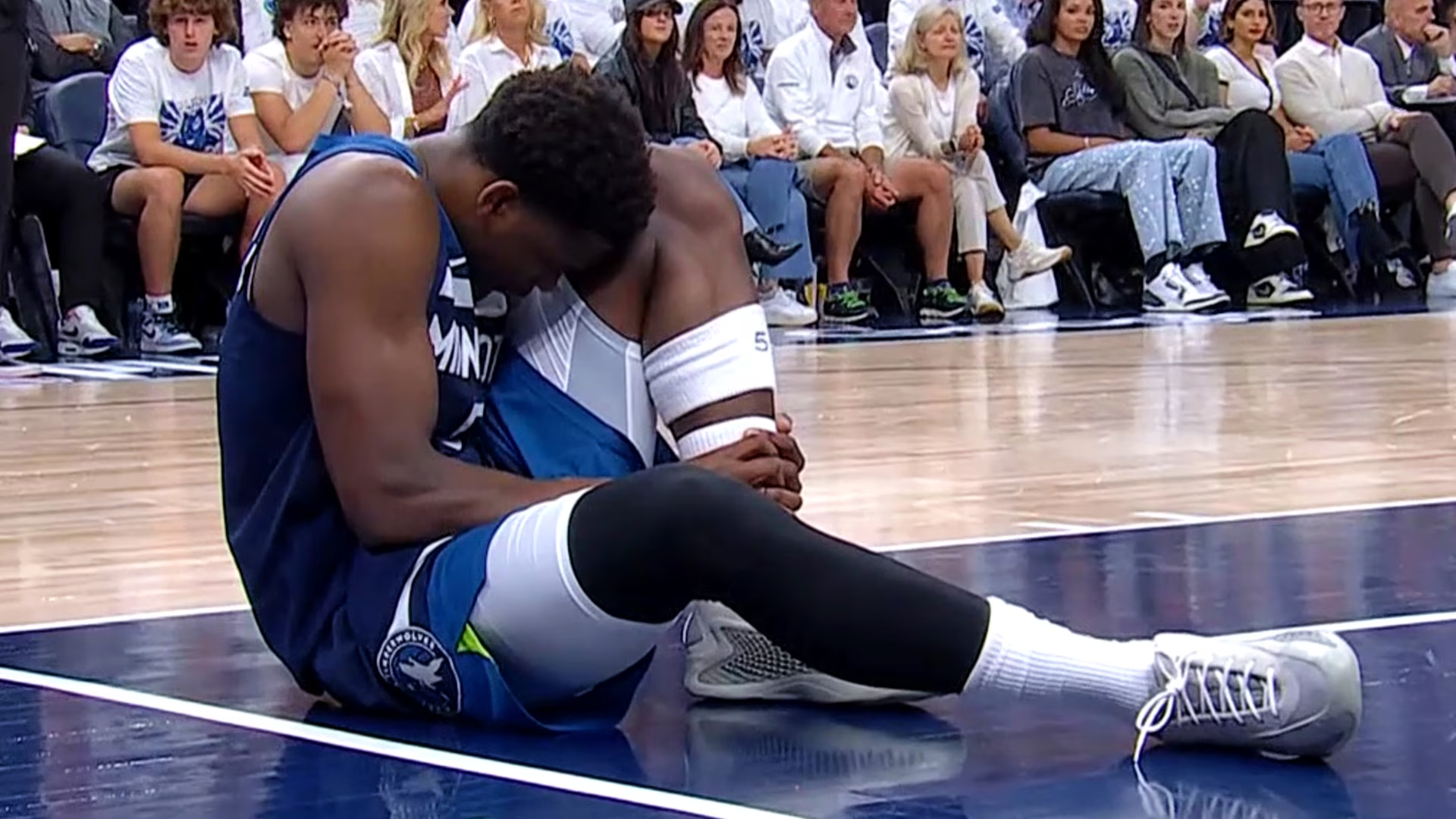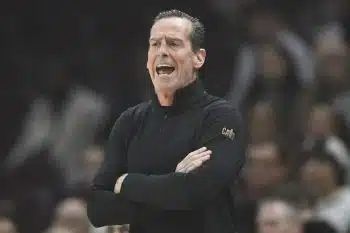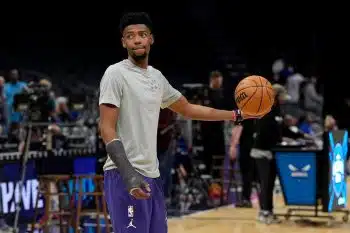Research Features
Is Jayson Tatum being “carried” to an NBA title?

Key Highlights:
- The people who think Tatum is getting “carried” are focusing on the wrong parts of the box score.
- Tatum’s size and strength are a big reason why the Celtics’ defensive scheme against the Mavericks is working.
- Tatum may be going through a shooting slump, but he has shown some serious growth as a decision-maker, which was a major weakness of his for a long time.
After my first viewing of the Boston Celtics’ convincing Game 1 NBA Finals victory over the Dallas Mavericks, I scrolled through my Twitter (I refuse to call it “X”), figuring I would find a smorgasbord of tweets salivating over the Celtics splendor. However, I was instead met by tweets like this:
Tatum being carried to a ring pic.twitter.com/klScPAqLAt
— 🥤 (@34for2) June 7, 2024
At a glance, Jayson Tatum’s stat line of 16 points on 6-for-16 shooting from the floor in a blowout win leaves a lot to be desired, particularly when he is supposed to be the team’s head honcho. However, anyone who has read my work knows that I believe box scores don’t paint the full picture.
Was that the case here? Or did Tatum really get “carried?” I spent my second watch of Game 1 trying to answer this question. Let’s see what I found out.
What The Box Score Doesn’t Tell You
I hate to be that guy, but traditional box scores don’t really inform you of much (although, as we will see in a second, it does give some good hints). Yeah, they tell you how many points, rebounds, and assists a player accumulates in a given game. But do they tell you how much Tatum’s defensive versatility unlocks Boston’s scheme?
One of the Mavericks’ most lethal points of attack is their pick-and-roll game with Luka Doncic and the Lob Goblins (Daniel Gafford and Dereck Lively II). However, the Celtics have found a way to neutralize this action by putting Tatum on the center and Jaylen Brown on Doncic. This enables the Celtics to switch the ballscreen and kill the threat of the roll.
This strategy is possible in large part because Tatum is big and strong enough to guard Gafford/Lively and Doncic (when switched on to him). Usually, when a team tries this kind of strategy on the Mavericks, they counter it by having Gafford and Lively eat on the offensive glass. But Tatum is such a great defensive rebounder (94th percentile in defensive rebounding among forwards, per Cleaning the Glass) that this task isn’t so easy for the tandem.
This is evidenced by the fact that the offensive rebounding battle was dead-even (10 a piece) between the Celtics and the Mavericks (ironically enough, you can find that on the box score). Tatum finished the game with nine defensive rebounds and 11 total rebounds (more stuff you can find on the box score).
Speaking of size and rebounding, Tatum’s massive frame is causing problems for Dallas on the other end of the court. In the clip below, Tatum gets switched on the much smaller Kyrie Irving in the post. Unfortunately, the ball never finds its way to his hands. But that’s okay because he leverages his size advantage into an offensive rebounding opportunity and another scoring opportunity for his team.

Pushing The Right Buttons
Along with being the keystone to a defensive scheme that has shut the faucet off on the Mavericks’ favorite play, Tatum was also tasked with being the team’s lead ball handler.
Since Tatum and Brown were given the mantle of the Celtics’ dynasty, the team has been prone to collapses because of offensive stagnation caused by a lack of elite on-ball creation. History seemed to be repeating itself in the third quarter when the Mavericks cut the lead down from 29 to 8. Some of this had to do with hot shooting from Doncic and cold shooting from the Celtics, but some of it was also because Tatum and Brown fell back into some old habits, like this:

However, instead of compounding his mistakes, Tatum gathered his composure. After a timeout with 4.5 minutes left in the third, Tatum returned eager to showcase his growth on the national stage. Instead of driving into packed paints and forcing a tough shot or committing a turnover, Tatum was calculated – surveying the floor and taking what the defense was giving him.

Tatum’s ability to steer the ship in the face of adversity kept Boston’s offense on track and away from another embarrassment. Despite having their lead cut to eight, Boston took a 20 point lead heading into the final frame. Tatum ended the night tied for the game-high in assists (5).
What About His Scoring?
Okay, so Tatum is rebounding, playing defense, and distributing. That’s great but sounds more like what you’d see from a role player than a number one option on a championship team. That’s what Tatum’s critics are complaining about. They know Tatum is impactful. They just think he’s not a great number one option. Right?
Not necessarily. Earlier this postseason, we discussed how the small sample sizes we see in the playoffs can produce weird/unsustainable shooting numbers. In that specific instance, we were referring to Paolo Banchero shooting above his usual averages. However, small sample sizes can also cause the opposite result.
This postseason, Tatum is averaging similar points per game (25.3) to his teammate Brown (24.8) on lower efficiency (56% true shooting compared to Brown’s 61.2%). Many people look at these numbers as a demerit on Tatum’s abilities as a scorer.
But those people aren’t factoring in that Tatum is shooting an effective field goal rate of just 40.5% on his pull-ups this postseason (per NBA.com). This matters because, in four of the last five regular seasons, Tatum has shot an eFG% of 45.4% or higher (including this season when he was at 47.5%), meaning that these playoffs have been uncharacteristic of his normal shooting abilities. Pull up shooting is a big part of Tatum’s scoring bag, so when he’s going through a cold stretch on those types of shots, it has a massive effect on his scoring.
Tatum 2023-24 Pull Up Shooting Regular Season vs. Playoffs*
| Part of Season | Pull Up Effective Field Goal % | Pull Up Field Goal Attempts |
| Regular Season | 47.5% | 8.7 |
| Playoffs | 40.5% | 9.1 |
*Data Provided by NBA.com
The Bottom Line
One other thing the box score gives you (at least since 1996-97) is a player’s plus-minus. In Game 1, Tatum had the second-highest plus-minus (outside of Jrue Holiday) of any player who logged minutes with a +19. This is symbolic of all the different ways that Tatum can leave his imprint on a basketball game (rebounding, defense, decision-making, spacing, etc.).
Yes, Tatum is going through a shooting slump. But don’t forget that in Game 7 of the 2010 NBA Finals, Kobe Bryant (Tatum’s idol) went 6-for-24 from the floor en route to his fifth NBA title. No one said he got “carried” to the championship that year. And if they did, they were wrong for it.
Do you know why? It’s because the all-time greats (like Bryant) find different ways to win, even when their shot is failing them. And in Game 1 against the Mavericks, Tatum showed us that he’s ready to be discussed in these sorts of conversations.











